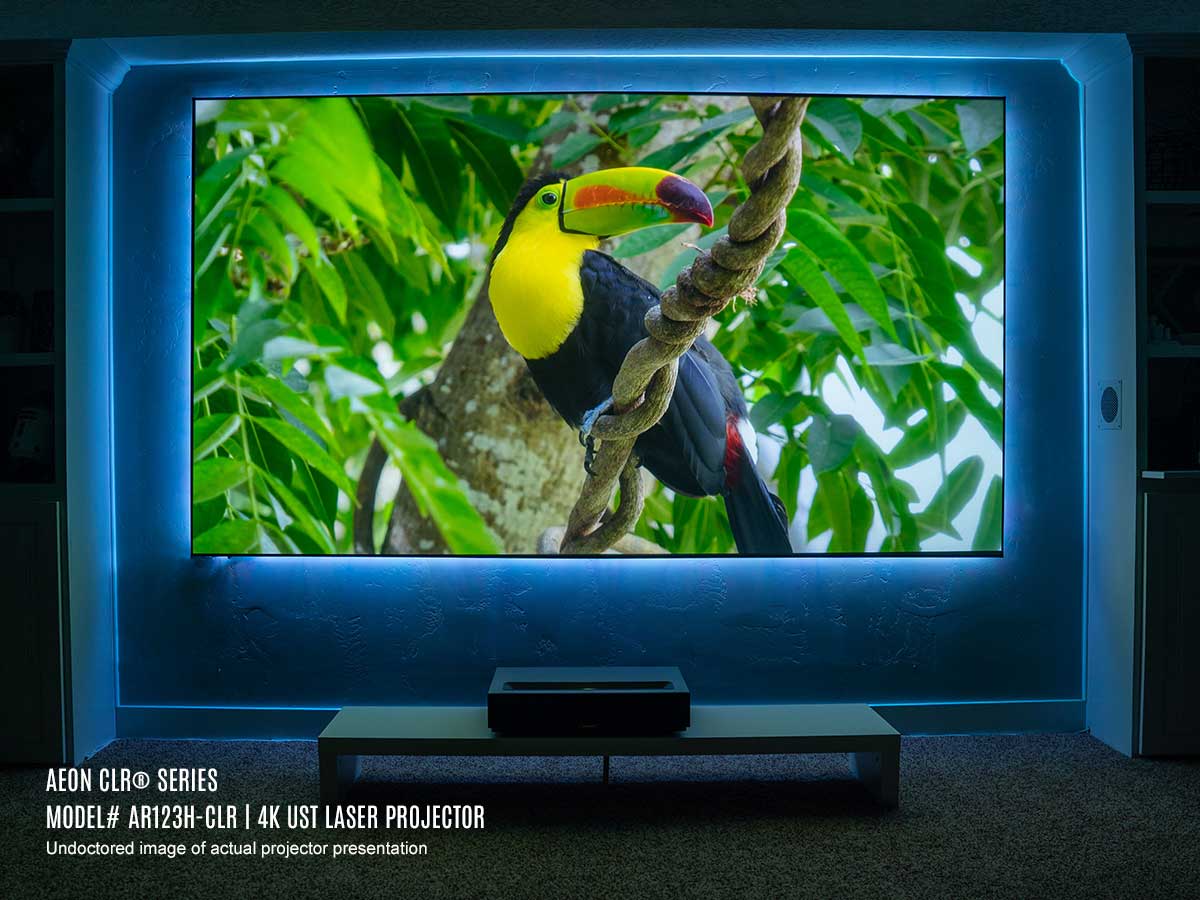Why Wall-Mounted Projector Screens are the Future of Home Cinema
In the ever-evolving world of home cinema, wall-mounted projector screens are revolutionizing the way we experience movies and entertainment. With their sleek design, incredible picture quality, and space-saving benefits, it’s no wonder that these screens are quickly becoming the future of home theater systems.

Advantages of Wall-Mounted Projector Screens
Wall-mounted projector screens offer numerous advantages over traditional television sets. Firstly, the picture quality is astonishingly clear and vibrant, bringing every detail to life and immersing you in a world of visual splendor. Unlike television screens, projectors can produce larger images without compromising on quality. This means you can enjoy a truly cinematic experience right in the comfort of your own home.
Another advantage of wall-mounted projector screens is their minimalistic design. They take up very little space, allowing you to optimize your home theater setup. Whether you have a dedicated space or a cozy living room, a wall-mounted projector screen seamlessly blends into any environment. This not only enhances the aesthetics of your home but also ensures that you have more room to move around and fully enjoy your movie-watching experience.
Furthermore, wall-mounted projector screens are highly versatile. They can be adjusted to fit various aspect ratios, allowing you to enjoy different types of content, such as movies, TV shows, and sporting events, without any black bars or distortion. This versatility ensures that you get the most out of your projector screen, no matter what you’re watching.
Types of Wall-Mounted Projector Screens
When it comes to wall-mounted projector screens, there are several types to choose from, each with its own unique features and benefits. The most common types include fixed-frame screens, retractable screens, and motorized screens.
Fixed-frame screens are designed to be permanently mounted on the wall. They provide a flat and taut surface for optimal image quality. These screens are ideal for dedicated home theater rooms, as they offer a seamless and immersive viewing experience.
Retractable screens, on the other hand, can be rolled up and hidden when not in use. They are a great option for multipurpose rooms, where the screen needs to be concealed when not in use. These screens are available in manual and motorized versions, with motorized screens offering the convenience of remote control operation.
Motorized screens are the epitome of luxury and convenience. With just a push of a button, the screen can be lowered or raised, providing a hassle-free viewing experience. These screens are perfect for those who want the ultimate home theater setup, with all the bells and whistles.
Factors to Consider When Choosing a Wall-Mounted Projector Screen
Before investing in a wall-mounted projector screen, there are several factors to consider to ensure that you make the right choice for your home cinema setup.
Firstly, consider the size of the screen. The size of the screen should be proportionate to the viewing distance and the size of your room. Too small of a screen may result in a less immersive experience, while a screen that is too large can be overwhelming and strain your eyes.
Next, consider the aspect ratio of the screen. The aspect ratio refers to the width and height of the screen. The most common aspect ratios are 16:9 (widescreen) and 4:3 (standard). Choose the aspect ratio that best suits the type of content you will be watching.
Another important factor to consider is the gain of the screen. Screen gain refers to the amount of light reflected back to the audience. A higher gain means a brighter image, while a lower gain results in a more controlled viewing experience. Consider the ambient light conditions in your room and choose a screen with an appropriate gain.
Lastly, consider the material of the screen. Different screen materials have different characteristics, such as gain, color accuracy, and viewing angle. Some common screen materials include matte white, gray, and acoustically transparent materials. Choose a material that suits your viewing preferences and room conditions.
Maintenance and Care for Wall-Mounted Projector Screens
To keep your wall-mounted projector screen in optimal condition, it’s essential to follow proper maintenance and care guidelines.
Firstly, avoid touching the screen surface with bare hands. Oils and dirt from your hands can leave fingerprints and smudges, affecting the picture quality. If necessary, use a microfiber cloth or screen cleaning solution to gently clean the screen surface.
Secondly, avoid exposing the screen to direct sunlight or excessive heat. Prolonged exposure to sunlight can cause discoloration or damage to the screen material. Keep the room well-ventilated and at a moderate temperature to ensure the longevity of your screen.
Lastly, regularly inspect the screen for any signs of damage or wear. Check for any loose brackets, tears in the screen material, or malfunctioning motorized mechanisms, if applicable. Address any issues promptly to prevent further damage and ensure the continued performance of your screen.
Comparison Between Wall-Mounted Projector Screens and Other Types of Screens
While wall-mounted projector screens offer numerous benefits, it’s important to consider how they compare to other types of screens, such as television sets and portable screens.
Compared to traditional television sets, wall-mounted projector screens offer a larger viewing area and a more immersive experience. They can produce images that are much larger than what a television screen can offer, creating a truly cinematic experience. Projector screens also provide more flexibility in terms of aspect ratio and screen size, allowing you to customize your viewing experience.
When compared to portable screens, wall-mounted projector screens offer a more permanent and seamless solution. Portable screens are designed for convenience and portability, but they may sacrifice image quality and stability. Wall-mounted screens, on the other hand, provide a fixed and stable surface for optimal image quality and a more immersive viewing experience.
Ultimately, the choice between a wall-mounted projector screen and other types of screens depends on your individual preferences and needs. Consider factors such as space availability, budget, and desired viewing experience when making your decision.
To wrap it up
As the demand for home cinema experiences continues to rise, wall-mounted projector screens provide the perfect solution. With their stunning picture quality, space-saving design, and versatility, these screens are undoubtedly the future of home entertainment. Upgrade your home theater setup and prepare to be captivated by the magic of wall-mounted projector screens.
Whether you’re a movie enthusiast, a sports fan, or simply a lover of quality entertainment, a wall-mounted projector screen can transform your viewing experience. Say goodbye to clunky television sets and hello to a seamless, immersive, and cinematic home cinema setup. Enjoy the best of both worlds with incredible picture quality and space-saving benefits. The future of home cinema has arrived, and it’s on your wall.
